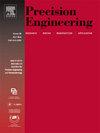基于能耗大数据和优化双向网络的机床综合驱动系统热误差补偿建模研究
IF 3.5
2区 工程技术
Q2 ENGINEERING, MANUFACTURING
Precision Engineering-Journal of the International Societies for Precision Engineering and Nanotechnology
Pub Date : 2025-02-27
DOI:10.1016/j.precisioneng.2025.02.024
引用次数: 0
摘要
在智能制造蓬勃发展的时代,数控机床集成驱动系统的热误差表现出非线性、时变、强耦合等复杂的动态特性。这些热误差与热源分布和能量消耗等多种因素密切相关。传统的热误差补偿建模技术往往不能考虑多种热因素的影响,主要依赖于从有限数量的热敏感点获得的温度数据。为了解决这一问题,本研究引入了一种新的双向时空网络模型(IKSM)。该模型集成了改进的全集成经验模态分解(ICEEMDAN)、核主成分分析(KPCA)和增强的可扩展冠状猪优化(SSCPO)。在研究之初,利用江西嘉仕特公司提供的S5H型智能精密加工中心进行了实验。采集了电主轴和驱动进给的直线电机在不同工况下的温度、电流、功率和热误差数据。随后利用ICEEMDAN-KPCA方法降低数据维数,从而促进有效提取基本特征。同样,采用SSCPO算法对网络模型参数进行优化。通过一系列烧蚀实验和对比分析,IKSM在不同转速和进料速率下均表现出优异的性能。例如,在电主轴转速为10,000 rpm时,相对于基本BIGRU模型,均方根误差(RMSE)降低了62.05%,而决定系数(R2)提高了40.23%。利用SHAP方法对影响数控机床精度的关键因素进行了综合分析,提出了提高数控机床精度的有效策略和创新途径。本文章由计算机程序翻译,如有差异,请以英文原文为准。
Research on thermal error compensation modeling for the machine tool integrated drive system based on energy consumption big data and an optimized bidirectional network
In the era of burgeoning intelligent manufacturing, the thermal errors of the integrated drive system in CNC machine tools manifest intricate dynamic traits, including non-linearity, time-variance, and strong coupling. These thermal errors are intricately associated with multiple factors, such as heat source distribution and energy consumption. Traditional thermal error compensation modeling techniques often fail to account for the influence of multiple thermal factors, primarily relying on temperature data obtained from a limited number of thermally sensitive points. To address this gap, the present research introduces a novel bidirectional spatiotemporal network model (IKSM). This model integrates the Improved Complete Ensemble Empirical Mode Decomposition with Adaptive Noise (ICEEMDAN), Kernel Principal Component Analysis (KPCA), and Strengthened Scalable Crested Porcupine Optimization (SSCPO). At the onset of the research, experiments were carried out using the S5H Intelligent Precision Machining Center provided by Jiangxi Jiashite Company. Temperature, current, power, and thermal error data of the motorized spindle and the linear motor for driving feed under various working conditions were collected. The ICEEMDAN-KPCA approach was subsequently utilized to reduce data dimensionality, thereby facilitating the efficient extraction of essential features. Similarly, the SSCPO algorithm was applied to optimize the parameters of the network model. Through a series of ablation experiments and comparative analyses, the IKSM demonstrated exceptional performance across varying rotational speeds and feed rates. For instance, at a motorized spindle speed of 10,000 rpm, the Root Mean Square Error (RMSE) decreased by 62.05 % relative to the basic BIGRU model, while the coefficient of determination (R2) increased by 40.23 %. Furthermore, the SHAP method was employed to conduct a comprehensive analysis of the key influencing factors, yielding effective strategies and innovative approaches for enhancing the accuracy of CNC machine tools.
求助全文
通过发布文献求助,成功后即可免费获取论文全文。
去求助
来源期刊
CiteScore
7.40
自引率
5.60%
发文量
177
审稿时长
46 days
期刊介绍:
Precision Engineering - Journal of the International Societies for Precision Engineering and Nanotechnology is devoted to the multidisciplinary study and practice of high accuracy engineering, metrology, and manufacturing. The journal takes an integrated approach to all subjects related to research, design, manufacture, performance validation, and application of high precision machines, instruments, and components, including fundamental and applied research and development in manufacturing processes, fabrication technology, and advanced measurement science. The scope includes precision-engineered systems and supporting metrology over the full range of length scales, from atom-based nanotechnology and advanced lithographic technology to large-scale systems, including optical and radio telescopes and macrometrology.

 求助内容:
求助内容: 应助结果提醒方式:
应助结果提醒方式:


